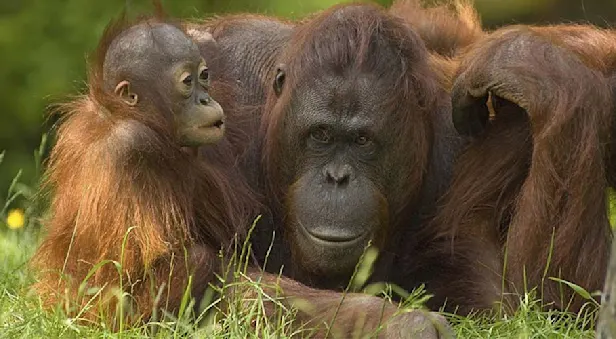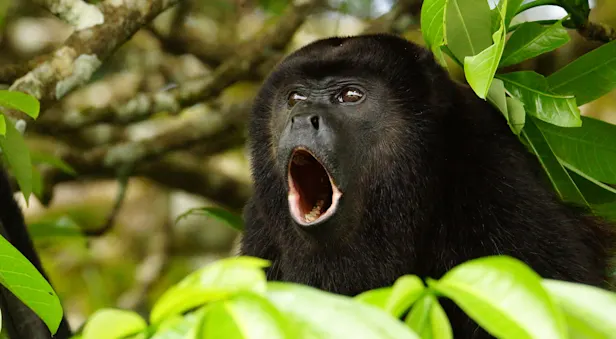Sea Turtle Facts | Borneo Wildlife Guide
Habitat
Selingan Turtle Island is one of the main turtle nesting sites in Borneo. The beaches and coastal mangroves found here are home to two endangered species: the hawksbill and the green sea turtle. Green sea turtles nest in more than 80 countries and are found around the world in tropical and subtropical coastal waters. Hawksbill turtles are found on tropical coasts in the Atlantic, Pacific and Indian oceans.
Physical Characteristics
All living sea turtles belong to the family Cheloniida, with the exception of the leatherback sea turtle, which is a member of the Dermochelyidea family. Green sea turtles grow 3 to 5 feet long and typically weigh 300 to 350 pounds. Hawksbill sea turtles are smaller, weighing 100 to 150 pounds and are 2 to 3 feet in length.
Feeding Habits
Adult green sea turtles are herbivores, primarily feeding on seagrasses and algae blooms, which they grind with their serrated jaws. Juveniles are omnivores and will also eat crustaceans, seaworms, jellyfish and sponges. Hawksbill sea turtles have a specialized diet, feeding almost exclusively on sponges, using their sharp beaks to search in the crevices of coral reefs. They also feed on anemones, shrimp and squid. Juvenile hawksbills eat Sargassum seaweed, fish eggs and crabs.
Reproduction
Hawksbill and green sea turtles inhabit shallow island waters. During the breeding season, females often make lengthy migrations to return to their natal beach every two to four years.
Nat Hab travelers have the opportunity to visit Malaysia’s first sea turtle hatchery, which was established on Selingan Turtle Island in 1966. In the evening, rangers patrol the coast, guarding the sea turtles that swim ashore to lay their eggs. Green sea turtles and hawksbill sea turtles nest at night, laying their eggs in holes in the sand that females dig with their hind flippers. A female lays a clutch of between 70 and 200 eggs, which she then covers with sand. Then, she returns to the ocean, leaving the tiny hatchlings to fend for themselves. When the eggs hatch in two months, the babies must make the perilous journey to the sea before being picked off by predators such as crabs, birds and mammals. Even once they reach the ocean, there is no safety in open water—it is estimated that only 1 in 1,000 hatchlings will reach adulthood. Surviving hawksbill turtles can live 30 to 50 years, while green sea turtles can reach 80 to 100 years.
Threats & Conservation
Green sea turtles are listed as endangered by the International Union for Conservation of Nature (IUCN), while hawksbill sea turtles are critically endangered. Unfortunately, sea turtles are a delicious meal for many animals, and they are covered with beautiful tortoiseshell—characteristics that have driven six of the seven species to the brink of extinction. Turtle meat was an appealing change to the salt pork and hardtack crackers that comprised the diet of sailors of old. Some maritime people still enjoy sea turtle meat, and the sale of sea turtle soup and sea turtle eggs is prolific as they are served illegally in restaurants from Sri Lanka to Nicaragua. The egg sacs are sucked from the shell, and there remains a belief that the eggs act as an aphrodisiac. Carved and polished trinkets made from tortoiseshell fetch a high price, and the mottled combs and jewelry are still sold in markets despite CITES ban of the tortoiseshell trade worldwide in 1973. Beauty products contained sea turtle oil and were produced until the 1970s, with the thought that the long-lived turtles had oil in their bodies that produced skin-rejuvenating effects. Additionally, turtle skin is sometimes poached and used as a replacement for alligator skin to craft leather goods such as purses and shoes.
Importation of sea turtle products into the United States is illegal. Nonetheless, turtle eggs are still plundered by people, adult turtles are accidentally caught in trawls, and fishers continue to hunt them. Sea turtles increasingly become entangled in marine debris and fishing nets and drown when they are unable to reach the surface. Illegal deforestation produces loose silt, which washes onto beaches along with weeds that sprout and take up nesting space. Floodlights from beachside hotels and other infrastructures scare off female sea turtles while they are nesting, and hatchings become disoriented as they try to find their way to the sea. Beach armoring such as seawalls block access to sea turtles’ nesting habitat altogether. These disturbances contribute to the endangerment of sea turtles, but conservation organizations are working to manage and protect the beaches that are crucial sea turtle nesting sites, crack down on their illegal trade, and reduce sea turtle bycatch by supporting sustainable fishing practices. Another hope for the sea turtles’ survival is sustainable ecotourism—the notion that people will travel great distances to admire, learn about and be inspired to conserve this magnificent species.
See Sea Turtles on These Trips

The Wilds of Borneo: Orangutans & Beyond
Plumb some of the world’s oldest and tallest rainforests in search of wild orangutans and other jungle wildlife among diverse ecosystems on this matchless tropical nature adventure.

























